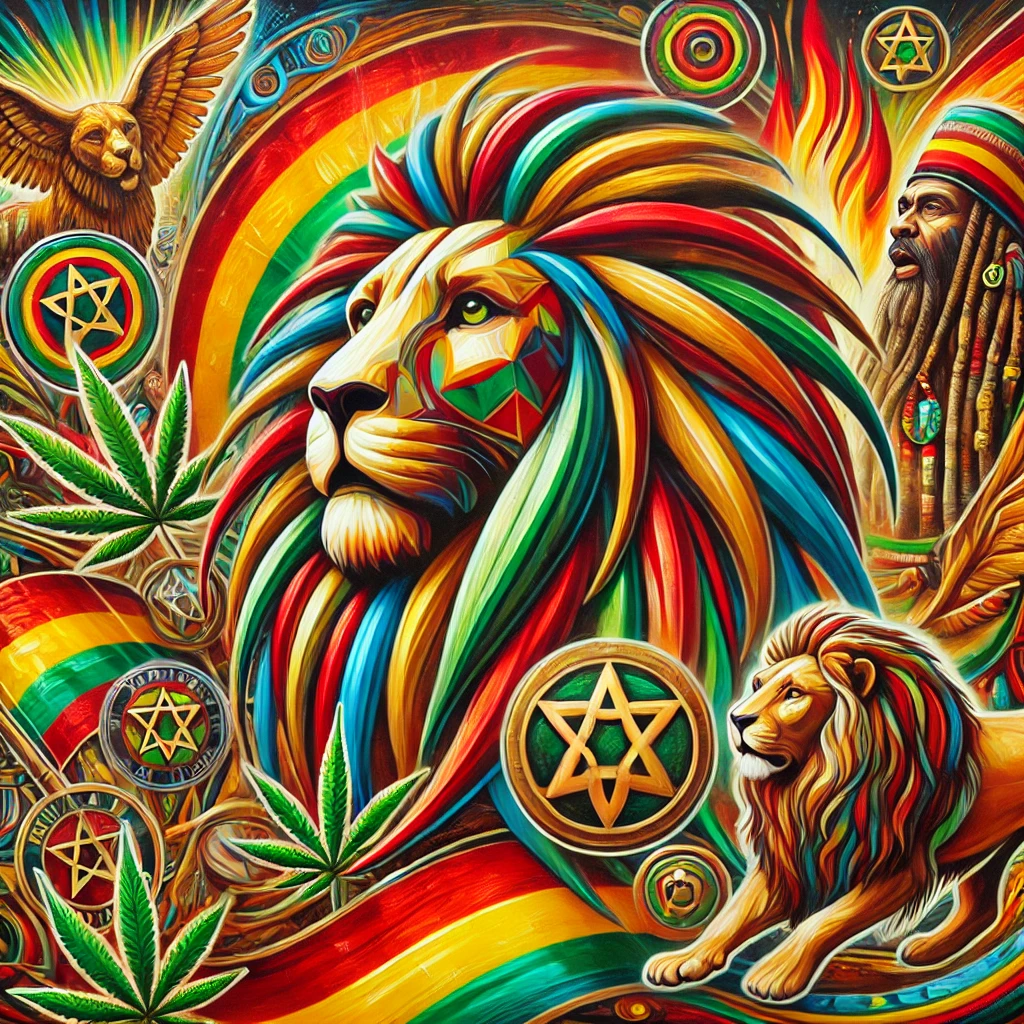Bless up, my brethren and sistren! Today, we explore the vibrant and meaningful world of Rastafarian art. This art form is rich in symbolism and cultural significance, reflecting di values, beliefs, and history of the Rastafarian movement.
The Roots of Rastafarian Art
Rastafarian art is deeply rooted in African heritage and spirituality. It draws inspiration from Ethiopia, di homeland of Haile Selassie I, and the rich cultural traditions of Africa. The art serves as a visual representation of the Rastafarian journey, from the struggles and triumphs to the deep connection with Jah and nature.
Symbolism in Rastafarian Art
Rastafarian art is laden with symbols that convey profound meanings. Some of the most common symbols include:
- The Lion of Judah: Representing strength, courage, and the lineage of Haile Selassie I, this symbol is a powerful reminder of Rastafarian identity and heritage.
- The Colors Red, Gold, and Green: These colors hold significant meaning in Rastafarian culture. Red symbolizes the blood of martyrs, gold represents wealth and prosperity, and green signifies the lush vegetation of Africa and hope for the future.
- Dreadlocks: Often depicted in Rastafarian art, dreadlocks symbolize a commitment to natural living and spiritual growth.
- The Star of David: This symbol, also known as the Seal of Solomon, represents the connection to the biblical lineage and the divine protection of Jah.
Themes in Rastafarian Art
Rastafarian art often explores themes of spirituality, liberation, and social justice. It reflects the struggles against oppression and the quest for freedom and equality. The art celebrates the beauty of African culture and the strength of the Rastafarian community. It is also a medium for expressing devotion to Jah and the teachings of Haile Selassie I.
Types of Rastafarian Art
Rastafarian art comes in various forms, each with its unique expression and significance:
Paintings and Murals
Paintings and murals are vibrant and dynamic, often featuring bold colors and powerful imagery. They can be found in homes, community centers, and public spaces, spreading messages of hope, unity, and resistance.
Sculptures and Carvings
Sculptures and carvings, made from wood, stone, and other natural materials, often depict figures of significant leaders, animals, and symbols. These artworks are not only aesthetically pleasing but also carry deep spiritual meanings.
Textile Art
Textile art, including tapestries, garments, and accessories, is an integral part of Rastafarian culture. Traditional clothing, adorned with the colors red, gold, and green, and symbols, reflects the pride and heritage of the Rastafarian people.
Music and Album Art
Reggae music, a cornerstone of Rastafarian culture, is often accompanied by album art that visually represents the music’s themes and messages. These artworks are a fusion of musical and visual creativity, enhancing the overall experience of the music.
The Role of Art in Rastafarianism
Art plays a crucial role in Rastafarianism by:
- Educating and Informing: Through visual storytelling, art educates people about Rastafarian history, values, and beliefs.
- Inspiring Change: Art inspires individuals to seek justice, equality, and spiritual growth. It encourages self-reflection and social activism.
- Building Community: Art brings people together, fostering a sense of community and shared identity. It is a medium for communal expression and celebration.
- Preserving Culture: Art preserves the rich heritage of Rastafarianism, passing down traditions and stories to future generations.
Conclusion
Rastafarian art is a powerful expression of faith, culture, and resistance. It is a visual testament to the resilience and spirituality of the Rastafarian community. Through vibrant colors, profound symbols, and dynamic themes, Rastafarian art continues to inspire and uplift people around the world. Embrace the beauty and significance of this art form, and let it connect yuh to the heart and soul of Rastafarianism.

